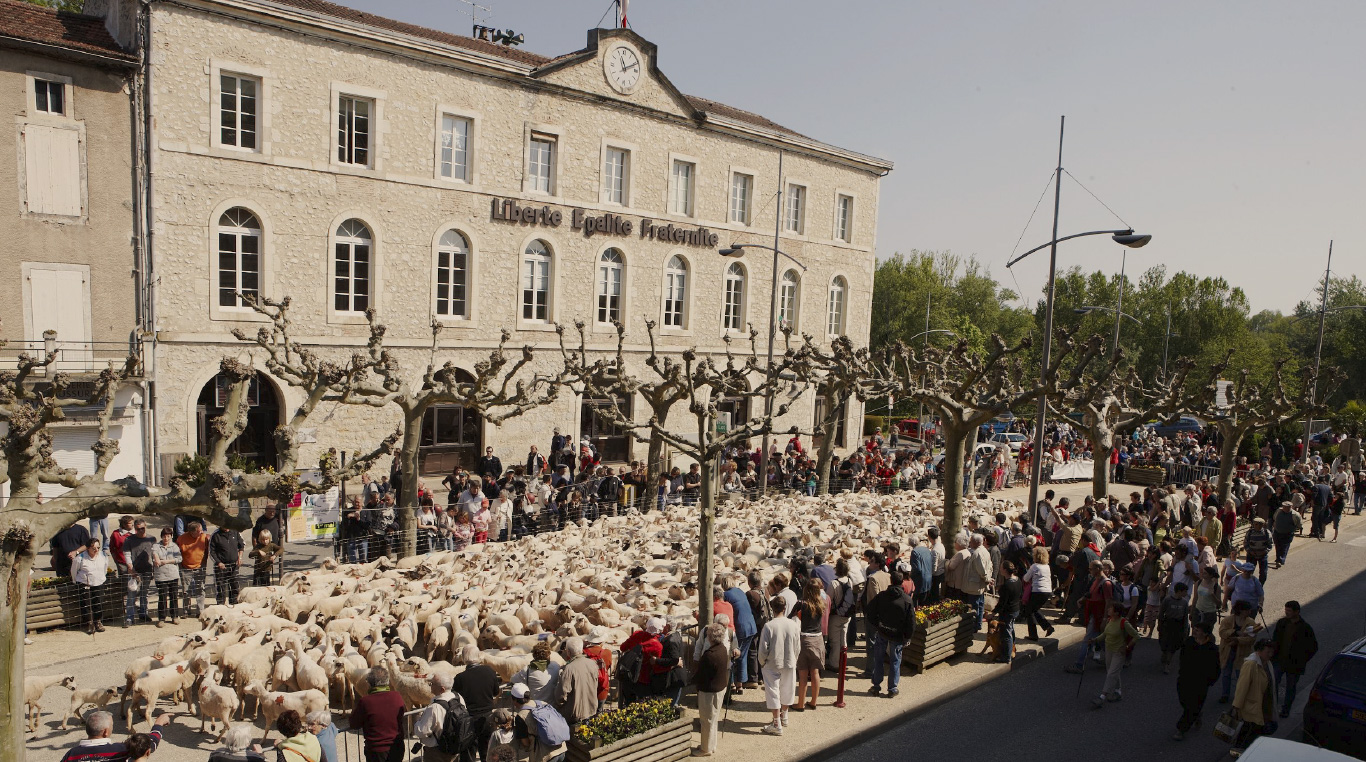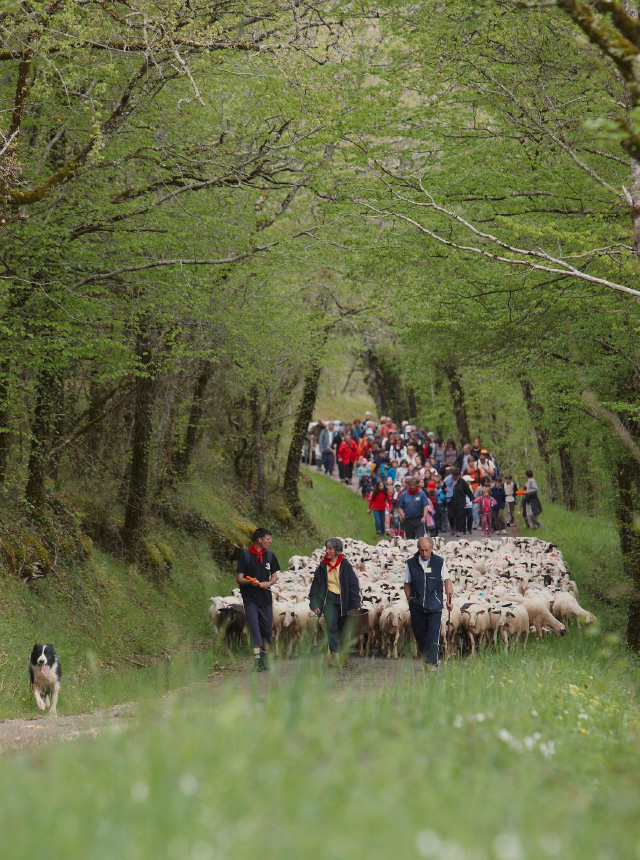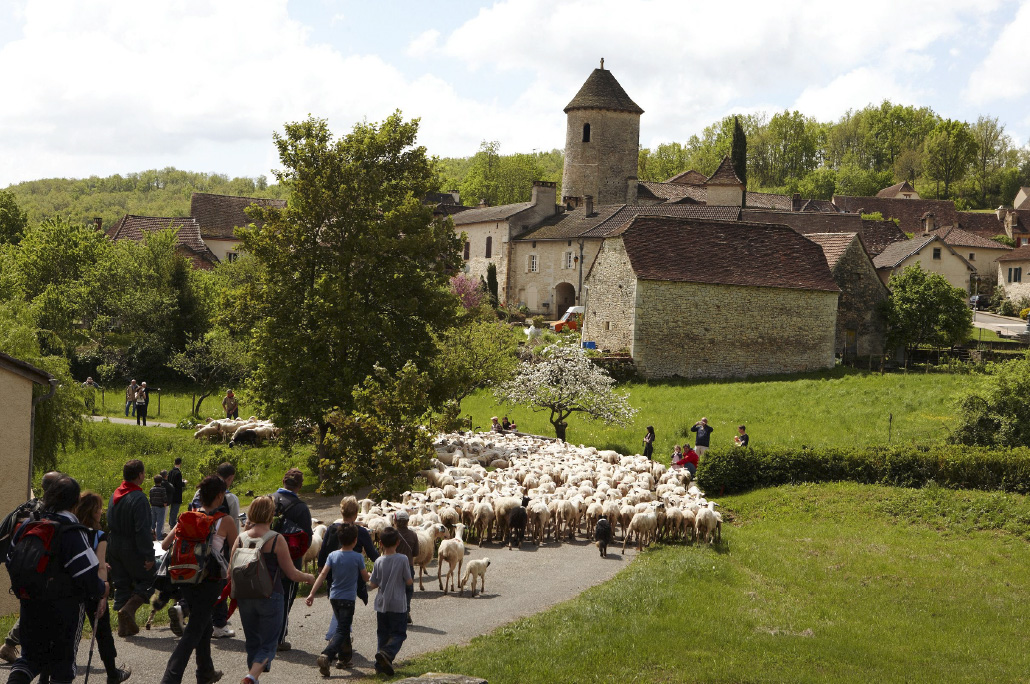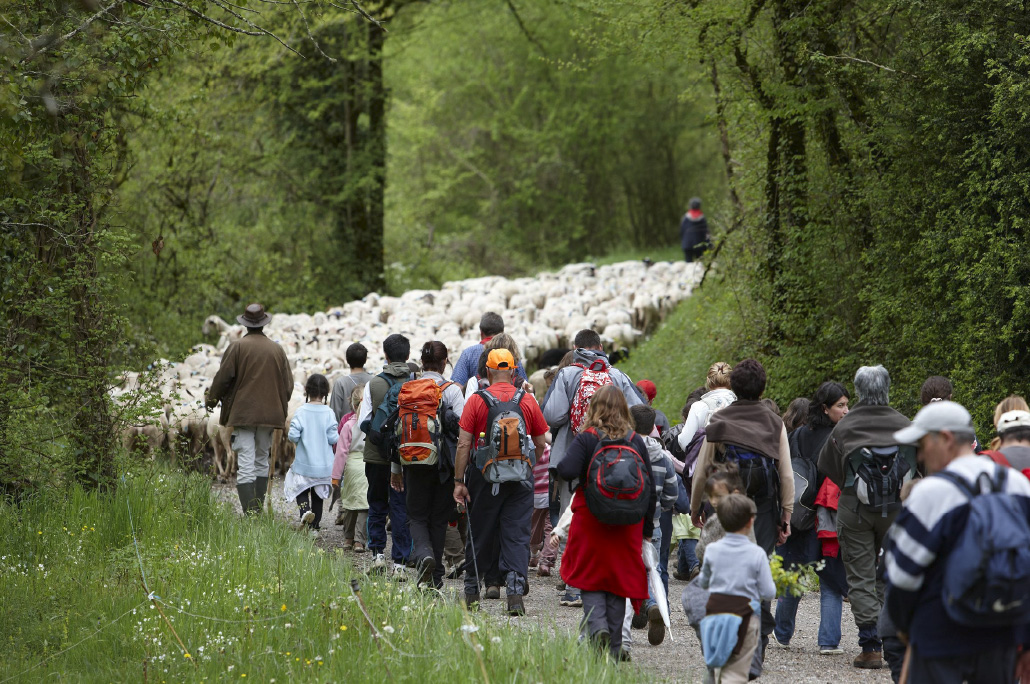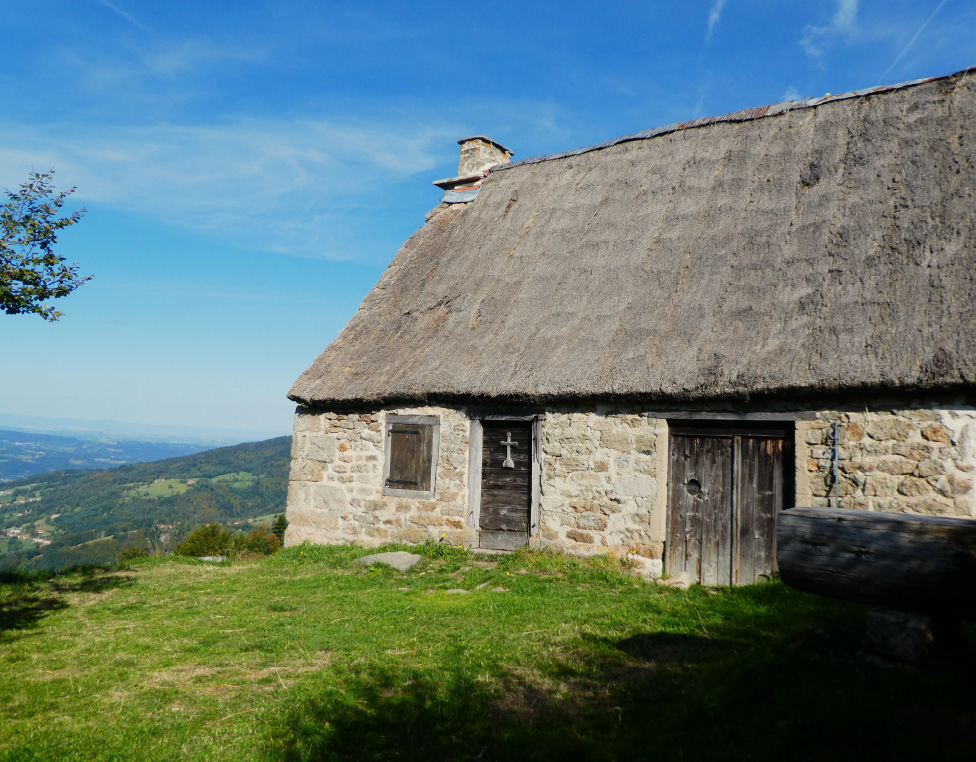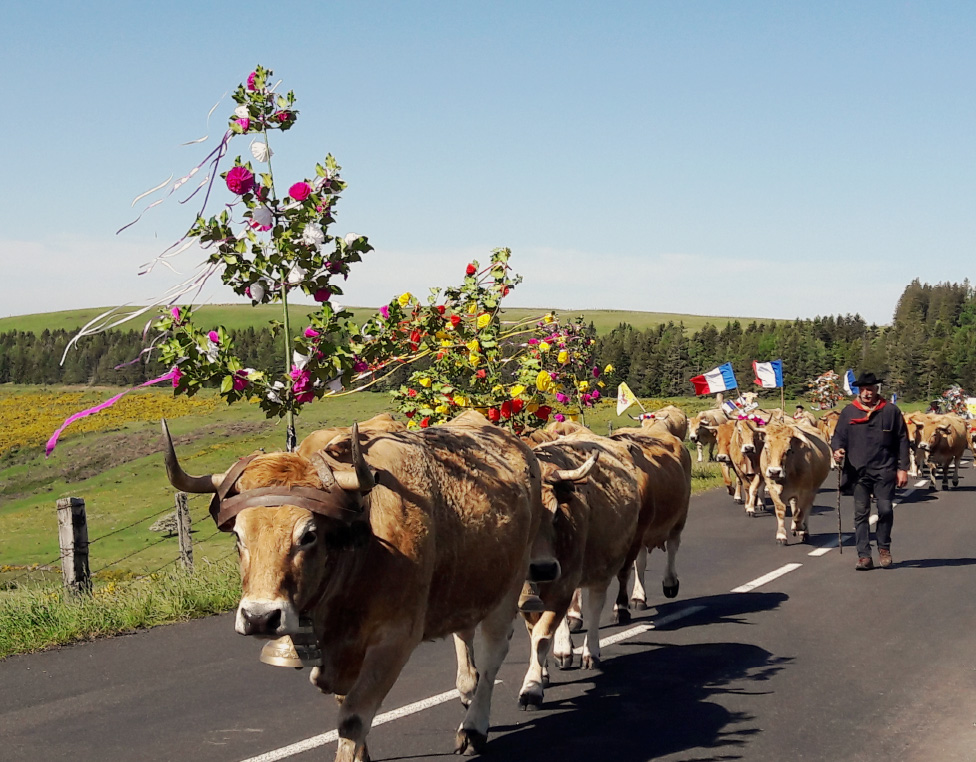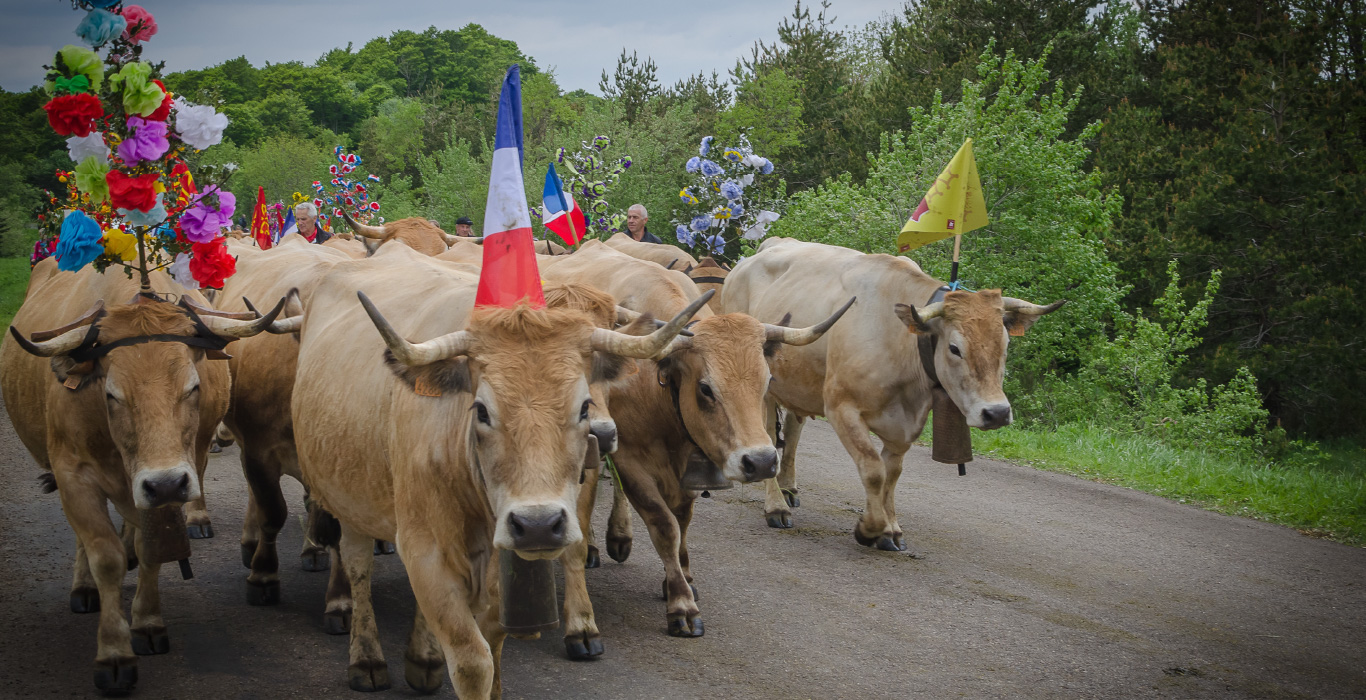transhumance in occitan :
In the Quercy, transhumance is mainly located on the limestone plateaus of the Lot, the foothills of the valleys of the Lot, the Dordogne and the Célé. These areas consist of dry grassland areas and downy oak groves. Some herds from Margeride, the foothills of Aubrac and Mont-Lozère, also go further north to the Auvergne-Rhône-Alpes region. On the Aubrac plateau, transhumance takes place on the high plateau at an altitude of over 1000 m.
In the Auvergne, transhumance takes place on the Monts du Cantal, the Cézallier, the Monts Dore, the Chaîne des Puys. On the Hautes Chaules of the Monts du Forez (1,200 to 1,600 m), cattle herds, forming a majority, and sheep, share the 10,000 ha of moors and lawns, formed from the six pastoral groups of the territory, with about fifty individual breeders . On the Monts du Livradois, lower in altitude (1,000 m), the transhumance tradition is less obvious (herds lived all year round on the high plateaus). Due to a lack of local users, summer pastures partly welcome herds from the Aveyron region. The transhumance also happens over the rest of the Massif Central: the plateau of Millevaches, the Morvan, the Ardèche plateau, and Monts du Pilat.
MASSIF CENTRAL
CAUSSES-CEVENNES
In the Livradois-Forez, on the Eastern edge of the Massif Central, for generations we have been “going up to the summer pastures” to make the most of the resources of the moors of the Hautes Chaumes du Forez. Historically, it was women and children who gradually led the cows, notably the local breed, the Ferrandaise, towards the "jasseries" or "lodges" higher in altitude, along the paved paths and following the rhythm of the growth of the grass, in order to spend the summer there. The milk was transformed into fourme on site. Today, the Fourme de Montbrison and Fourme d’Ambert PDOs enhance the value of this know-how, and many breeders, cattle and sheep, continue to shape these landscapes according to the rhythm of the seasons.
Sur les Causses et Cévennes, la transhumance est bien ancrée : on compte 100 éleveurs, 20000 brebis, 20 estives collectives. La transhumance ici ne se fait pas toujours en camion, au contraire ! Un bon nombre d’éleveurs ont à cœur de se déplacer à pieds par les drailles, chemins traditionnels de transhumance. Sur l’estive, les troupeaux sont menés par un berger qui réalise un travail exigeant et technique en pleine évolution. Rajeunissement et féminisation sont d’actualité ! Les pratiques s’adaptent aussi à des problématiques nouvelles comme la prédation et le changement climatique. Les milieux pâturés sont très variés et grâce aux bergers, les troupeaux s’y alimentent de juin à octobre, essentiel pour l’équilibre économique des élevages transhumants des Causses et Cévennes !
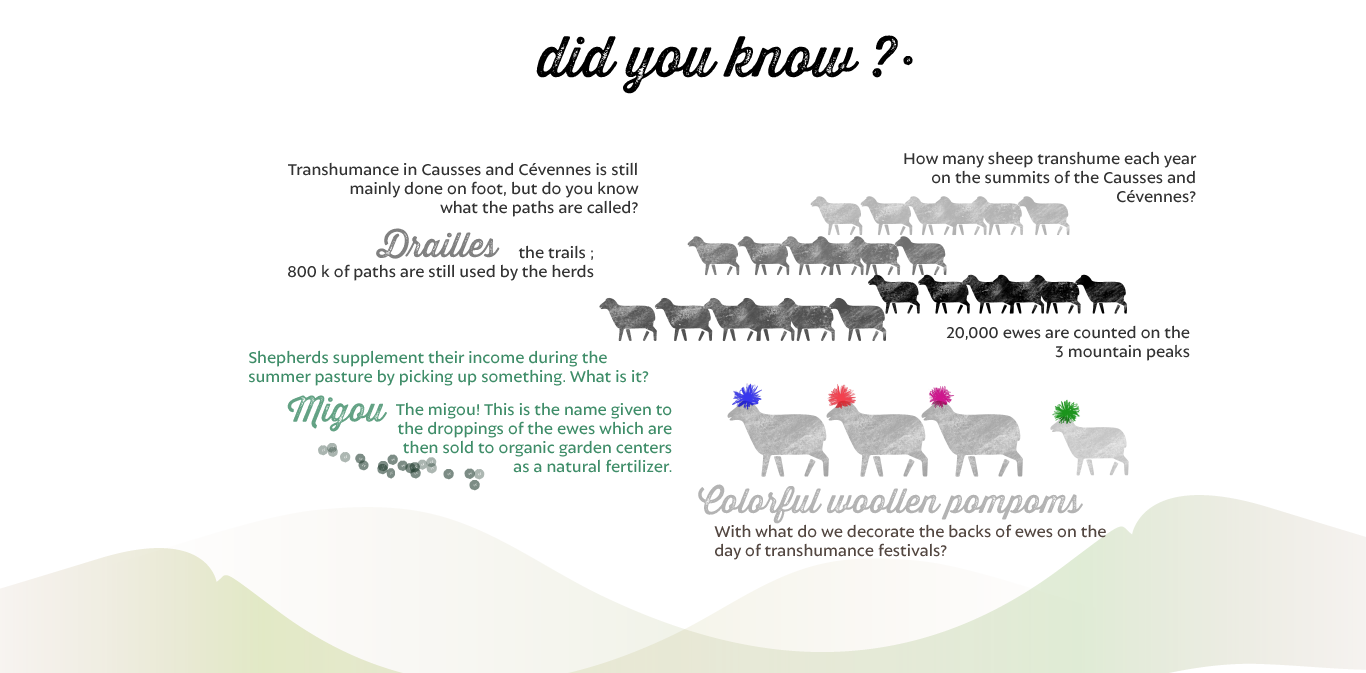
To learn more about transhumance in the Causses and Cévennes, go to:
causses-et-cevennes.fr and
the webdoc causses-et-cevennes.fr
TRANSHUMANCE FESTIVAL




